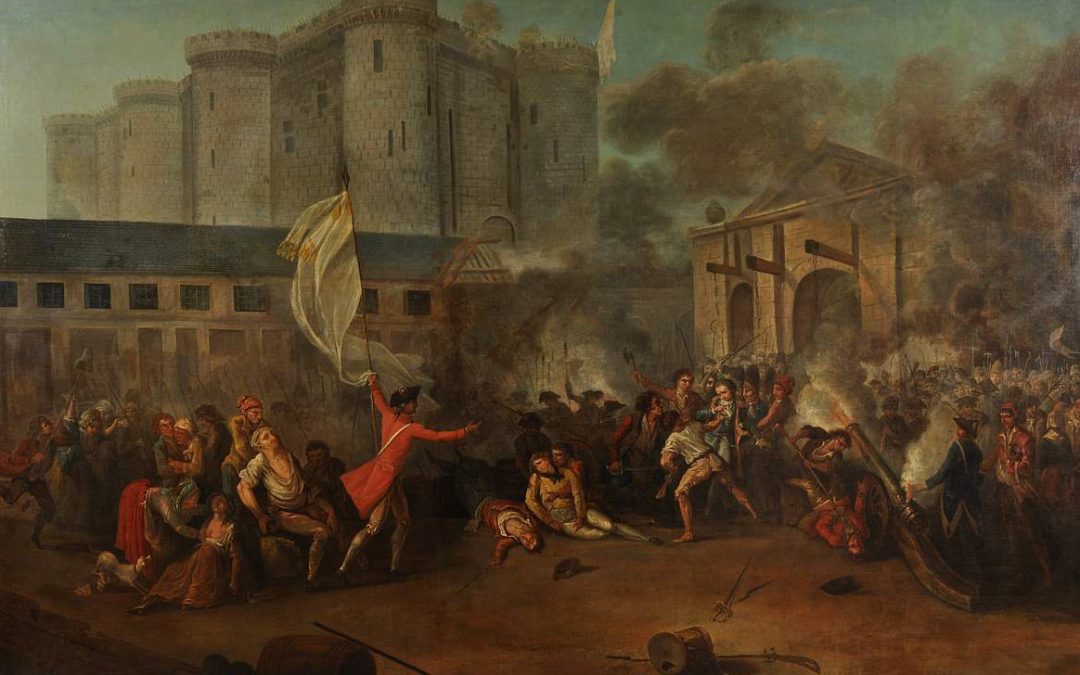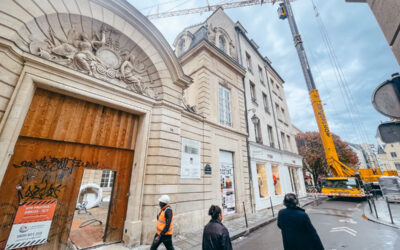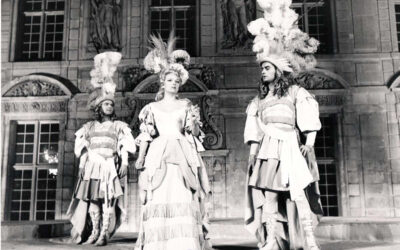The storming of the Bastille, Anonymous, Oil on canvas, H. 184,5 x L. 273,5 cm.
The history of the Bastille prison begins in the 1370th century with the construction of the fortress in record time, from 1383 to 1358. Only thirteen years! We are in XNUMX, during the reign of Charles V, at the worst hours of the Hundred Years' War. The kingdom of France is almost entirely in the hands of the English and its king, John “the Good”, their prisoner for two years.
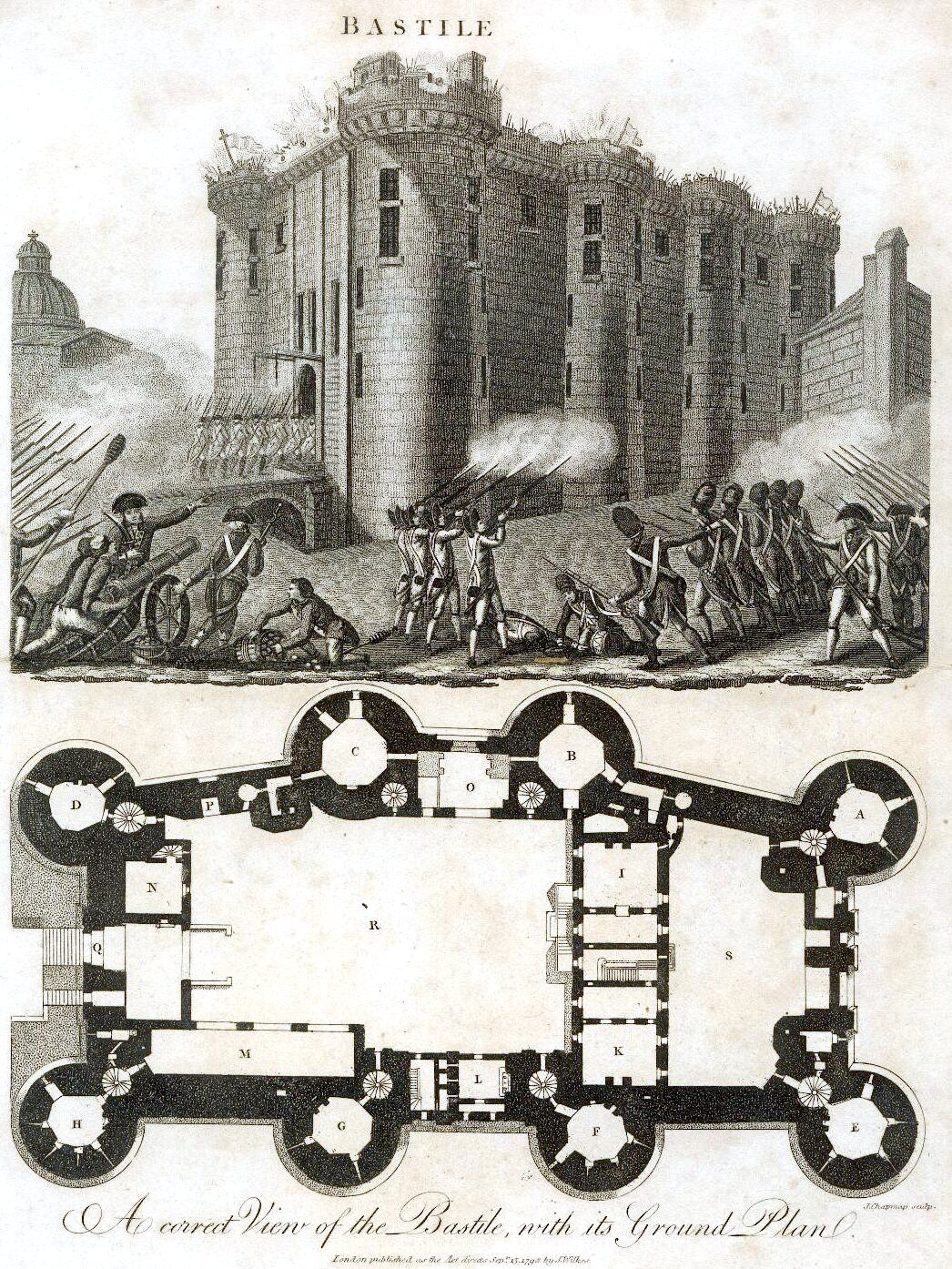
Plan of the Bastille, engraving by J. Chapman, published in London around 1792
A misfortune never comes alone, the people and the bourgeoisie of Paris revolted that year against the royal power. Led by the provost of merchants Etienne Marcel, Anne Hidalgo's distant predecessor, the mob invaded the royal palace on the Île de la Cité where young Charles, regent of the crown then aged 20 (his father was languishing in prison in England) witnesses, helplessly, the assassination of two grand marshals of his Court. Slaughtered before his eyes.
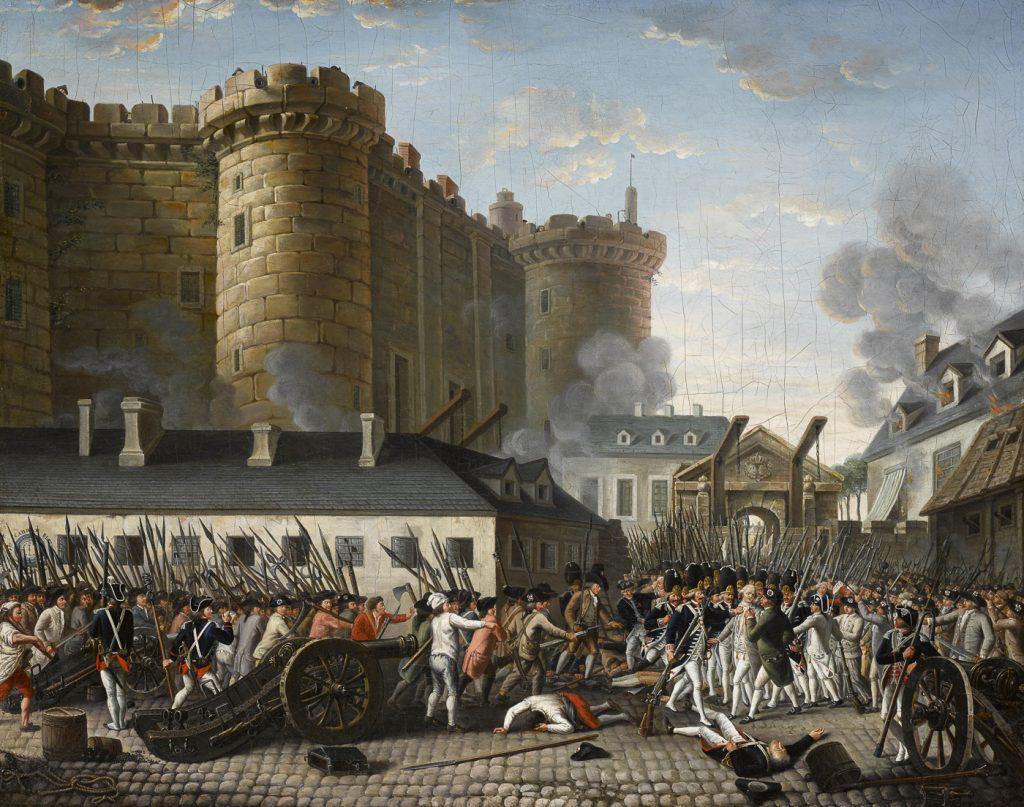
Capture of the Bastille. Arrest of Mr. de Launay, July 14, 1789, Anonymous. Around 1789
Crowned king in 1364, Charles V known as “The Wise” decided to ensure his security and that of his Court by going green further east, at the Hôtel Saint-Pol, the newly built palace “extra muros », in the current 4th arrondissement. Adjoining His Majesty's new suburban pavilion, the Bastille prison serves to dissuade the people from returning to play "yellow vests" as they had done on the Île de la Cité a few years previously.
It was only from the XNUMXth century, as France slowly transitioned from the feudal system of the Middle Ages to the royal absolutism of the Ancien Régime, that the Bastille was gradually transformed, if not into a five-star gulag. , at least in a place of deprivation of liberty equipped with a certain number of facilities.
Here, most of the prisoners, quite few in number, rather well born or even famous (the Marquis de Sade, Voltaire, among other personalities), have the right, in return for money, to have their home delivered, two centuries before smartphones. , their favorite foods, books, clothes. And, even, to receive visitors there – doctors, family, friends, gallant women. And this, in cells sometimes closer to the charming two-room apartment with a view than to the sinister dungeon.
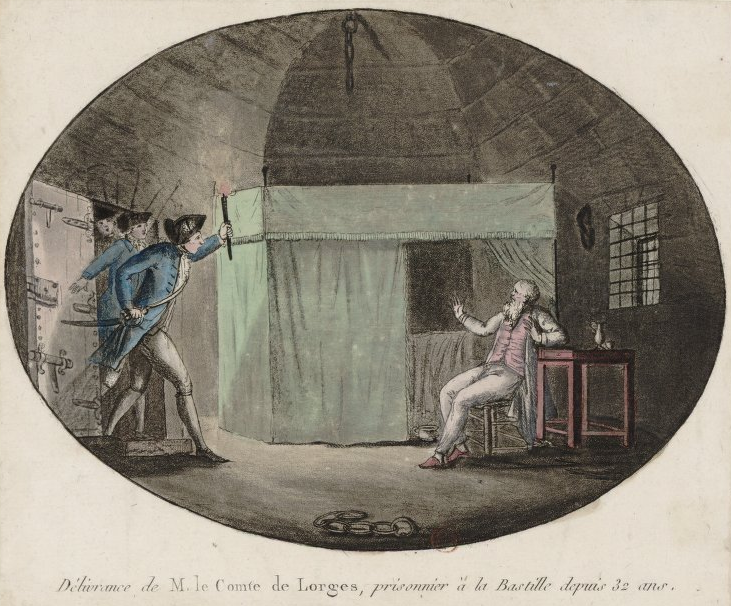
It is the king himself who is responsible for the reservation, by simple letter de cachet, that is to say a simple autograph of François/Henri/Louis – cross out the unnecessary entry and complete with the appropriate number – which leads to prison, without reason or trial. Towards the end of the reign of Louis XVI, the duration of stays extended, on average, from six months to two years. Hardly any more.
The fateful date of July 14, 1789 arrives. The immense fortified castle where seven inmates and an unfortunate governor – lynched that day – are bored, is rather the symbol of a moribund absolutism than that of a terrible “lubyanka” ( the Russian secret police prison) before its time.
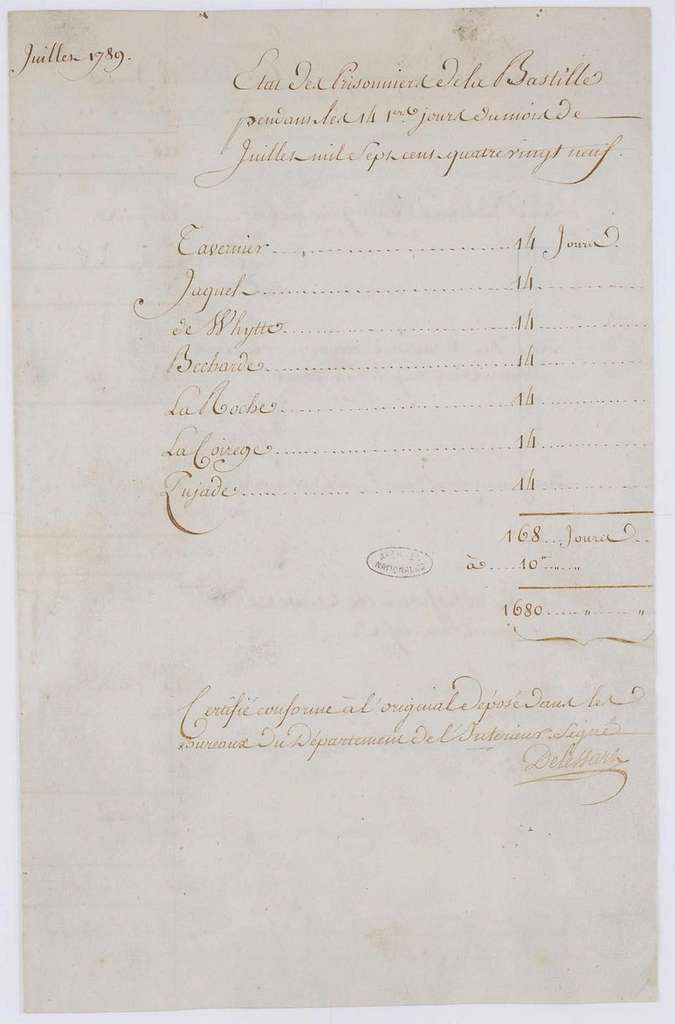
The reaction of the king, who would soon be nicknamed “Louis the Stupid” in revolutionary pamphlets, is known. “But is it a revolt? », he asked when the storming of the Bastille was announced. “No, Sire, it’s a revolution,” replied the Duke of Rochefoucauld-Liancourt.
The king's astonishment can be explained as follows: for him, the Bastille is no longer the symbol of much and he sees its assault as an almost innocuous event. He is wrong, of course, but it is true that the prison is no longer the heart of the penitentiary system.
Terribly costly to maintain for the Crown, a royal project that remained on the shelf had also planned its total demolition in 1784 in favor of the creation of a large square... to the glory of Louis XVI! The demolition will indeed take place, but by the people, seven years later, on this famous July 14 (and in the following weeks) which marks the first day of the republican adventure.
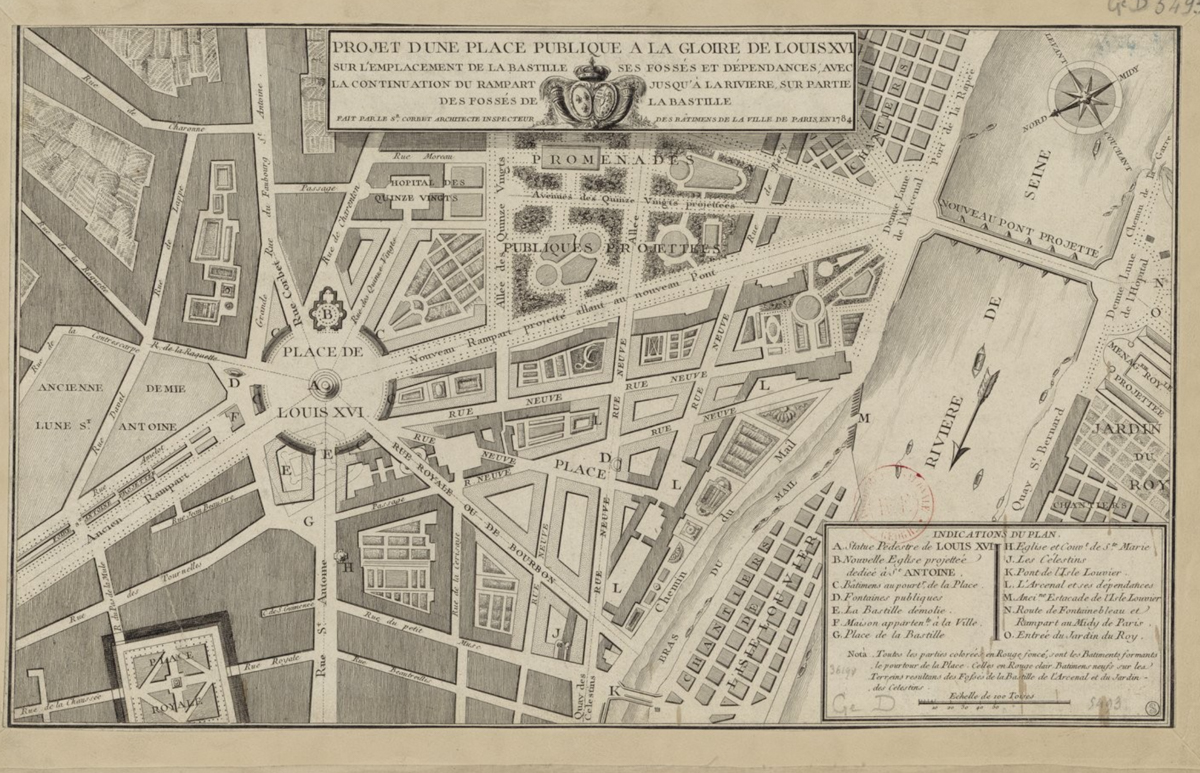
Project for a public square to the glory of Louis XVI on the site of the Bastille, its ditches and outbuildings with the continuation of the rampart (sic) to the river, on part of the ditches of the Bastille / made by the Sr Corbett 1784.
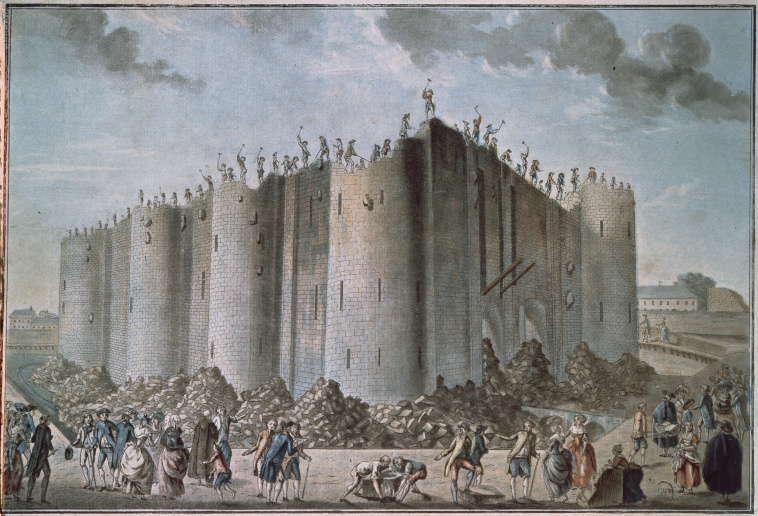
Demolition of the Bastille, print, published by Basset, 1789. Paris, Musée Carnavalet
Today, the remains of the Bastille are very rare: the outline of the walls on the square of the same name, some stones in the Henri-Galli square on the Quai des Célestins, others on the Bastille metro platforms; still others at the Concorde Bridge, completed in 1791 with the stones of the prison, so that the feet of citizens could tread at leisure on the infamous symbol of despotism.
Text: Arthur Goth-Moruzzi – Instagram
14.07.21
FOR PASSIONATES OFUS
Juliette Drouet actress, muse and mistress of Victor Hugo
At 14 rue Sainte-Anastase, from 1836 to 45 and at 12 from 1845 to 48, a few hundred meters from Place des Vosges, lived the muse and lover of Victor Hugo, Juliette Drouet née Julienne Gauvain.
Rue Vieille-du-Temple: the fabulous construction site restarts
A luxury hotel will be created at the end of the work. On the ground floor, the old stables and carriage houses will house the restaurant on the large courtyard, while the first courtyard, on rue Vieille-du-Temple, will feature two businesses continuing its 19th century layout.
The Marais festival, a fabulous story
The Festival du Marais dates back to a time that those under 60 cannot know. However, this leading artistic event was for a long time one of the most popular cultural events in the capital. For a quarter of a century, from 1962 to 1987, this unique festival…
NOW ON THE MOOD MARSH
The best tattoo parlors in Marais
Tattooing, an age-old practice, has long been the prerogative of convicts, dock workers, the underworld and sailors. Although it has become democratized, now affecting all profiles and concerning one in five French people, including 16% women compared to 10% men, it still remains taboo due to its definitive and transgressive nature.
Juliette Drouet actress, muse and mistress of Victor Hugo
At 14 rue Sainte-Anastase, from 1836 to 45 and at 12 from 1845 to 48, a few hundred meters from Place des Vosges, lived the muse and lover of Victor Hugo, Juliette Drouet née Julienne Gauvain.
Piccola Mia, the pizzas of the Republic
On the Place de la République, a brasserie with Italian accents has just opened, which quickly made people forget the old Pizza Pino. Welcome to Piccola Mia, the fruit of the joyful encounter between Italian chef Denny Imbroisi, pizza chef Julien Serri and mixologist Matthias Giroud who creates a creative cocktail menu.

